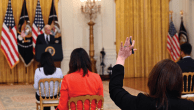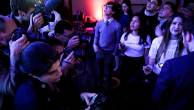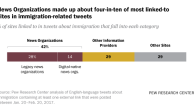Through the first 10 months of the year, the portrait of Iraq that Americans have received from the news media has in considerable measure been a grim one. Roughly half of the reporting has consisted of accounts of daily violence. And stories that explicitly assessed the direction of the war have tended toward pessimism, according to a new study of press coverage of events on the ground in Iraq from January through October of 2007.
In what Defense Department statistics show to be the deadliest year so far for U.S. forces in Iraq, journalists have responded to the challenge of covering the continuing violence by keeping many of the accounts of these attacks brief and limiting the interpretation they contain.
And as the year went on, the narrative from Iraq in some ways brightened. The drumbeat of reports about daily attacks declined in late summer and fall, and with that came a decline in the amount of coverage from Iraq overall.
This shift in coverage beginning in June, in turn, coincided with a rising sense among the American public that military efforts in Iraq were going “very” or “fairly well.”
The Portrait from Iraq: Percent of Stories

These are some of the findings of a study of more than 1,100 stories from January through October from 40 different news outlets conducted by the Project for Excellence in Journalism, a research institute that examines the press.
The findings suggest, among other things, that the bigger question may be not how the press interprets events but what kinds of events get covered, especially by a press corps whose movements are severely restricted in Iraq by the threat of attack and who are most mobile when embedded with U.S. troops.
The results of the study of the content of Iraq coverage also correlate to a great extent with attitudes expressed by journalists working in Iraq themselves. In a survey released by the Project in November, most journalists said they felt that the operations of the military were thoroughly covered, but they viewed the lives of ordinary Iraqis and the sense of daily life as the most “undercovered” subject. The findings here about what topics were covered tend to confirm the assessment of the journalists on the ground.
Accounts of Violence Over Time

Among the study’s findings:
- Daily accounts of violence made up 47% of all stories studied during the first 10 months of 2007. But because many of these stories were short, that represented a 27% of the time and space—or newshole—of the coverage studied.
- Through June, more than half of all stories studied were about violent incidents, but that number fell to roughly one third in September and October.
- Just more than half (56%) of the stories that offered a clear assessment of where things in Iraq were headed were pessimistic, but that coverage was more skeptical of the Iraqi government and the stability of the country than it was of U.S. policy.
- Stories assessing the effectiveness of U.S. policy—including the surge—more often than not were neither distinctly positive nor negative in the message they conveyed. Four in ten offered a mixed assessment, while a third were pessimistic and a quarter saw things as improving.
- A separate analysis of coverage in November, beyond the time frame of the main study, indicates that during that month positive assessments of the surge began to rise.
- The coverage overall was U.S. centric in subject matter. About half of all the coverage from Iraq was about American military and U.S. officials. Roughly another 10% was about private contractors, mostly Blackwater.
- Coverage of Iraqi civilians, by contrast, made up far less, 3% of stories and 5% of overall newshole.
- Despite enormous difficulty in getting access to sources, Americans did get a wide range of perspectives. Fully 40% of stories (representing 61% of the newshole) carried the views of multiple of types of stakeholders.
The Project for Excellence in Journalism is a non-partisan, non-ideological research institute that studies the press. It is one of eight projects that make up the Pew Research Center in Washington, D.C., a “fact tank” funded by the Pew Charitable Trusts.




